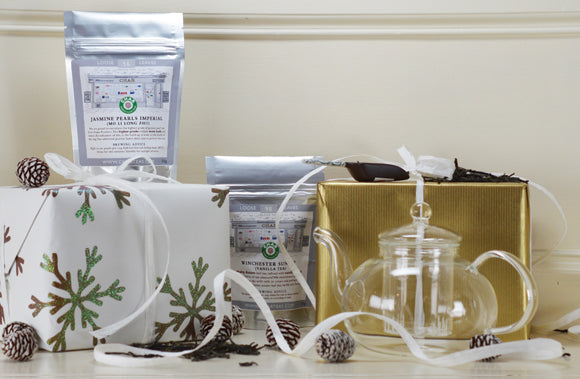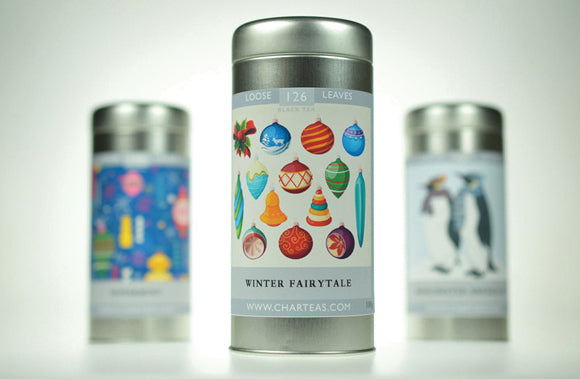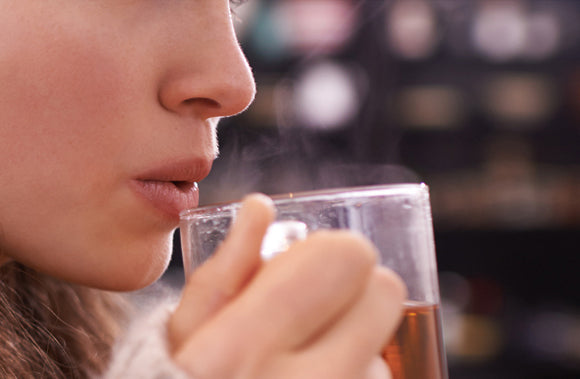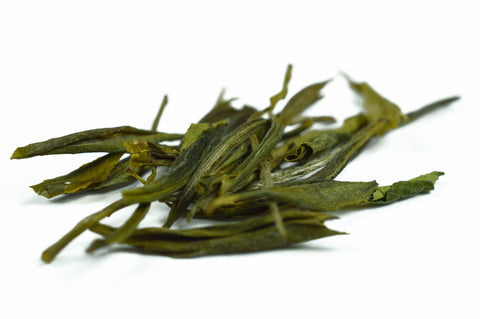
A Guide to Chinese Teas
When you think “Chinese Teas”, what initially springs to mind?
According to one legend, the Chinese emperor Shen Nung was sitting beneath a tree in 2737BC and boiling water to purify it when some leaves fell into the water. Upon drinking this new concoction, he declared it delicious. And we couldn’t agree more.
Since then, tea has developed in many ways including gaining specific cultural brewing and drinking practises, and different methods of production resulting in very different beverages. Chinese teas may be seen by western eyes to be synonymous with green teas and, while there are a plethora of beautiful Chinese green teas, do not be limited by this. Below are some of the well-loved tea types that have come from China.
White Tea
White tea is considered to have a more delicate palate than green tea, as the oxidation process is halted almost immediately after picking. It is therefore the most unprocessed tea type, and is closest to the tea leaves found in nature of all tea types. This means that white tea typically contains more antioxidants than any other type of tea, and it has been hailed for studies which suggest potential links to many health benefits. White tea gets its name from the small white hairs that coat the buds at the time this tea is picked. We at Char have four white teas, each with their own unique character, and we love white tea so much we also use it as the base tea in our much-beloved Winchester Evening blend!
Green Tea
Chinese green teas are made from the Camellia Sinensis plant, and are heated soon after picking in order to stop the oxidation process, which is why green tea has its characteristic leafy colour. The way in which the leaves are heated can impact the flavour of the tea itself. Traditionally this was achieved through steaming the tea, as is still popular in Japan (sencha translates to ‘steamed’ sen ‘tea’ cha). However, nowadays an array of methods such as pan frying in a dry wok, oven firing, and even sun drying are used. This results in plenty of tea varieties to explore! Legend has it that before tea had gained popularity, it was used by Buddhist monks in China as a concentration aid during long hours of meditation. The subtle distinctions of flavours in green teas allow us now, as then, to gain a precious few moments of quiet contemplation to live in the moment with increased alertness.
Due to some tannins and catechins being released only at higher temperatures, infusing green tea in water above 80 degrees Celsius is generally advised against in order to avoid a bitter-tasting cup. Rather, lower temperatures (75° to 80° for most green teas) will allow the sweetness of the tea to shine through. These bitter-tasting phenols will also be released if the tea is infused for too long, so always read the brewing instructions at the bottom of the Char label in order to get the best possible taste.
If you are unsure of where to start with Chinese green teas, we recommend looking for our ‘Famous Tea of China’ badges – they are famous for a reason!
Red Tea
‘Red Tea’ is the name given to tea leaves treated like what we would refer to as ‘black tea’ in the west. The primary difference between a typical Assam or Ceylon tea and a Chinese red tea (besides the obvious geography) is that black teas we are accustomed to come from the camellia sinensis assamica plant, a variety of camellia sinensis, whereas Chinese red teas typically come from the camellia sinensis sinensis – the exact same plant which produces the beautiful green and white teas we know and love. As you can imagine, this results in a gentler brew than black teas from India or Sri Lanka, which many argue better allows the tea drinker to slow their minds and bring their awareness to the present moment in order to appreciate the subtle yet delightful hints in red tea. Red teas are non-astringent, meaning that they do not require milk as black teas often do. We have a carefully selected range of red teas which you can try, our favourite of which is the Golden Breakfast.
Pu Erh
The name of Pu Erh tea originates from the town of Pu Erh in China, where these teas were first marketed. Traditionally, the tea leaves were compressed into ‘cake’ shapes in order to improve ease of transport, and the long journeys combined with exposure to humidity and microflora resulted in the at first bitter tea gaining sweetness as it aged. This process became honed and was named ‘fermentation’. Pu Erh is like wine in that it improves with age in both taste and value, and this association of continuous improvement through time makes Pu Erh cakes wonderful wedding presents.
Pu Erh tea is often used for its medicinal properties – the effects of which include protecting the heart and blood vessels, improving digestion, and some research even suggests it may improve cholesterol levels. As with all tea (that is, leaves from the camellia sinensis plant), there is caffeine in Pu Erh, however the caffeine content is typically lower than other forms of tea such as English breakfast teas. At Char, you can find many forms of Pu Erh including the traditional cake form. If you are intrigued by Pu Erh but unsure where to start, we recommend trying our Chai Pu Erh.
Oolong
Whilst green teas are made from fresh tea leaves processed soon after picking, and red teas are made from leaves which have been allowed to oxidise, oolong teas sit somewhere between these two. This means that oolong teas contain many of the health benefits of green tea and less caffeine than a typical black tea, whilst providing a drinking experience distinct from both types of tea. The oolong that you choose can be closer to either a green or black tea depending on its oxidation period. Typically, greener oolong are comprised of balled up leaves, whereas darker oolong are open leafed. If you are curious about oolong but do not know where to start, we recommend trying our Orange Oolong and Milk Oolong, both of which are Char customer favourites which will help you begin to understand the range of oolong flavour.
Tea Flowers
Although not technically a type of tea unto itself, tea flowers are a remarkable feat of Chinese dedication to extracting beauty and ceremony from everyday habits. Flowering tea originates from the Yunnan province, and is an artful combination of dried flowers and dried tea leaves tied together in such a way that upon infusion, the tea drinker is not only provided with a beautiful cup of tea, but also a nourishing visual experience. In this way, flowering teas are an excellent and thrilling reminder to engage with the act of tea drinking with all of one’s senses. Flowering teas are best appreciated when infused in a glass teapot and shared with loved ones.

 Assam
Assam
 Black
Black
 Breakfast
Breakfast
 Caffeine Free
Caffeine Free
 Ceylon
Ceylon
 Cold Brew
Cold Brew
 Darjeeling
Darjeeling
 Decaffeinated
Decaffeinated
 Earl Grey
Earl Grey
 Favourites
Favourites
 Flavoured
Flavoured
 Flowering
Flowering
 Fruit
Fruit
 Green
Green
 Herbal
Herbal
 Jasmine
Jasmine
 Mate
Mate
 Oolong
Oolong
 Organic
Organic
 Pu Erh
Pu Erh
 Rooibos
Rooibos
 Scented
Scented
 Smoked
Smoked
 Sparkling
Sparkling
 White
White
 Winchester
Winchester
 Loose Tea
Loose Tea
 Tea Bags
Tea Bags
 Gift Caddies
Gift Caddies
 Teapots
Teapots
 Accessories
Accessories
 Tea Tins
Tea Tins
 Storage
Storage








